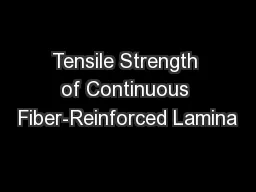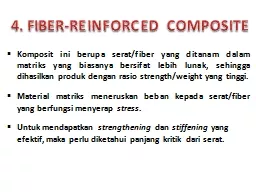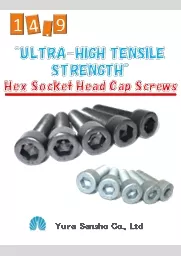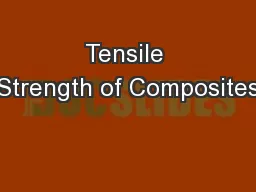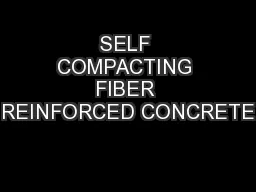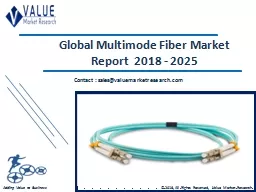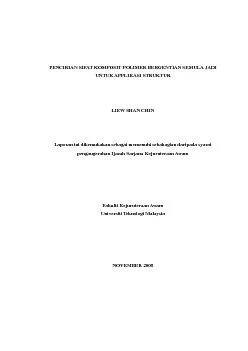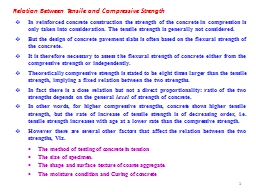PPT-Tensile Strength of Continuous Fiber-Reinforced Lamina
Author : min-jolicoeur | Published Date : 2016-05-20
ME 7501 Lecture 6 Dr BJ Sullivan Strength of a Continuous Fiber Reinforced Lamina For the orthotropic lamina under simple uniaxial or shear stress there are 5 strengths
Presentation Embed Code
Download Presentation
Download Presentation The PPT/PDF document "Tensile Strength of Continuous Fiber-Rei..." is the property of its rightful owner. Permission is granted to download and print the materials on this website for personal, non-commercial use only, and to display it on your personal computer provided you do not modify the materials and that you retain all copyright notices contained in the materials. By downloading content from our website, you accept the terms of this agreement.
Tensile Strength of Continuous Fiber-Reinforced Lamina: Transcript
Download Rules Of Document
"Tensile Strength of Continuous Fiber-Reinforced Lamina"The content belongs to its owner. You may download and print it for personal use, without modification, and keep all copyright notices. By downloading, you agree to these terms.
Related Documents

